



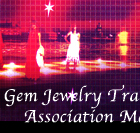

 |
 |
 |
 |
 |
 |
||
| |
|
||||||
| |
|
|
|
|
|
|
|
|
|
||||||||
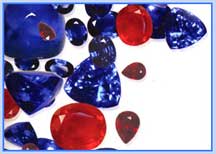 |
Nowadays,
we take less time driving to Chantaburi than going somewhere in
Bangkok as the BKK-Chantaburi motorway road surface is so smooth
that we cannot help speeding up to 150 km an hour. For the distance
of 250 kms, it is no longer adventurous for we spend only
two and a half hours on the road before entering Chantaburi. |
|||
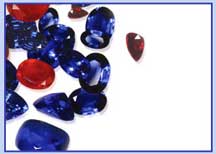 |
Recalling
past memories (now you can imagine how old the auther is talking
more and more about the past) twenty years ago, we spent four hours
on the bus along the rocky road to go to this town. The people managed a two-day trip from Thursday to Saturday to hunt continuously for gemstones with the hope to find some way to make profit. The charming and attractive trading style on free-trade basis under the brand name of 'Synthetic, imitation and treated stones: returnable', which is always followed by the teasing expression, 'Are expensive stones returnable?' The 'No sir' answer challenges people to prepare themselves with better knowledge and a better price. |
|||
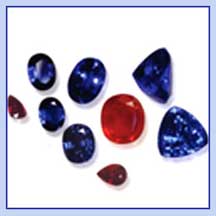 |
My
first experience in Chantaburi was really unforgettable. In fact, we
are used to the trading offices or jewelry shops in Bangkok where
business is made in pri-vate areas with sound security. To our surprise, in Chantaburi we happened to see the small brokers taking their gemstones out of their old shirts and trading is always made open air, or more officially, on the tables rented by traders along the road in the gem market. During price negotiations,the stones will be sealed in a parcel while the middleman, called 'broker', will act on behalf of both seller and buyer. Upon each business conclusion, he will be rewarded a percentage of the selling volume. Sometimes it can take the whole day long to finalize the deal. The author has many friends who tell that being a broker is sometimes an interesting extra job for they can earn more income than being a tailor all week long. Some brokers take it as profession; some cannot because of the uncertainty in earnings. |
|||
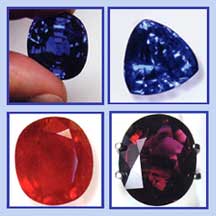 |
The
so called 'Synthetic, imitation, treated stones: returnable; expensive
stones: no return' trading attracts not only Thai merchants but
also foreigners worldwide who pour into this town in order to
buy something to make profit in their own country. The author
has one foreign friend who has heard about the reputation of Chantaburi.
Once when he came to visit the Bangkok show in Sirikit Convention
Centre, he was stopped by a notice inviting interested persons
for a one-day trip to Chantaburi. He decided to join this excursion
and succeeded in buying some pieces of gem-stones and eventually
made some profit. Since then he has come back and forth to Thailand
as a stone dealer. As a matter of fact, to be a stone merchant,
apart from basic technical knowledge, one needs to have a lot
of experience and expertise. A gemological graduate himself has to start from zero if he wants to be trained to be a stone merchant and Chantaburi is always chosen as a venue for one to try his luck. |
|||

|
However,
now this market has become dull and boring. Many friends are starting
to complain about the fact that there are no more interesting stones to
see and the market has been quiet so far. I understand that we all
would love to draw back to the former atmosphere, wouldn't
we? The theme of doing gemstone business is to be able to give a full explanation of the stones with honesty and sincerity. In case of any mistakes, the seller is always ready to take back the stones with a full refund for the policy is that consumers are to be protected. It is true that we all try to offer something better with more advanced technological quality improvement but this will only be done along with customer's confidence which is the core concept. At this point, it is vital to call for all concerned qualified personnel to brainstorm and find out which direction the quality development technique should go. The colorful gemstone is in fact always eternal, charming and amazing. It is very obvious that in a window that displays only diamond jewelry anywhere in the world, even in the top most exhibition, we will spend not more than five minutes there while we can spend the whole day long in the colored stone section. Unfortunately, Thai people lack knowledge and expertise marketingwise. Apparently, when the baht was devaluated from 25 baht against one dollar to forty baht, we, Thai people, have had to buy diamond which costs US$1,000 at 40,000 baht while we sold a US $1,000 gemstone at US$600 on the same day. Nevertheless all jewelry shop owners prefer to sell diamond for its better price. We stone people feel very painful about this. Hence, it is not yet a deadlock so far as we still have some good experience provided we do something about this deteriorating situation among ourselves. Fundamentally speaking, the doers are the ones who know best and who will be able to explain to prospective buyers all the facts. Or, it is not necessary to ask for the certificate of the stone as the result is always confusing where we see claims that three gemological institutions issued three different comments for one same stone. This is the reason why we should come to sit down and talk in the interest of developing criteria for stones which will be strictly handled and followed. It is also advisable, and all will be clarified, if we rely on our gemological institute of Thailand that has its network with world leading laboratories. We all have to help our society and buy back the legend that Thailand is the world capital and center of gem-stones in order that we all will enjoy and be happy with business as in the past. Photos Courtesy of Tony Brooke. |
Madagascar
is a country rich in natural resourceif that include a wide variety
of gemstone depos Its such as ruby, sapphire, quartz, tourmaline
and many others. From the air heading toward the capital, Antananarivo,
you get a view of the magnificence of Madagascar that is a patchwork
of rice paddies, cassava fields, rivers running red with clay, vast
expanses with sparse vegetation, and beautiful rock formations. |
||
 |
||
 |
||
Hidden
in this natural beauty are tn deposits of Madagascar, which were discovered
over one hundred years ago. In the early 90s the southern
part of the country was getting a lot of attention from miners but by
1998 the focus was on llakaka where the discovery of a huge
sapphire belt brought an influx of foreign investment that now includes
approximately thirty Thai-owned companies. To help address
the issues of the burgeoning gem industry, the World Bank, in
May 2003, approved a US$ 32 million loan agreement to help Madagascar
manage its mineral resources more effectively. Delegations from the Malagasy government, including representatives from the Ministry of Energy and Mines, representatives of Projet de Gouvernance des Ressources Minerales (PGRM), mayors from various provinces rich in gemstones, and advisors to the government, visited Thailand on several occasions in 2004. These groups attended the Bangkok Gems & Jewelry Fair, met with the Thai Gem & Jewelry Traders Association (TGJTA) Board of Directors and made numerous trips to Chantabun to observe the gem market there. |
 |
||
A delegation from the TGJTA then 27 to December 4 last year to visit mining areas and participate in discussions and a workshop with the Malagasy government on improving the export regulations with the aim of providing clear and easy-to-follow procedures for buyers. One of the top considerations for the Ministry of Energy and Mines, who organized the workshop with PGRM, was to increase the contribution of the mining sector to the development of Madagascar. |
||
 |
||
 |
||
The resolution from
the workshop recommends that the government pass the following measures
regarding resident and non-resident buyers: 1) the mining royalty of 2% on purchases made by resident buyers with registered Malagasy companies could be paid as follows, depending the case: a.as per the current system, the holder of a mining permit shall keep a register of sales controlled annually by the Service des Mines and on which he pays the royalty. He issues a laissez-passer model 1 (LP1) to each buyer for each sale, b. in the case where the buyer does not receive an LP1, he shall keep a register of his purchases and have it controlled regularly by the local Service des Mines, pay the royalty to a Treasury office and receive a laissez-passer model 3 (LP3). |
 |
||
 |
||
2) Non-residents
buyers, without registered Malagasy companies, will be authorized to
buy and legally export stones on the condition that they meet
the following requirements: a. on their arrival in Madagascar, they should register at the airport or in an office of the Service des Mines and get a temporary buyer's permit which is valid as long as their visa. b. they will pay the mining royalty of 2% as in article 1. However, they will pay an additional 'Droit Special sur les Transactions Minieres' (DSTM) of 2% of the purchase price for rough stones purchases which compensates for the additional fees paid by the resident companies. They may export their purchases legally after having paid the royalty and the DSTM to the Treasury. Cut stones purchased and exported by non-resident buyers are not liable to DSTM. These measures are slated to be implemented in January 2005 and it is expected that the country will attract an increasing number of buyers from around the world who will be more confident in doing business in Madagascar. *Photos courtesy of Chumphol Pornchindarak and Fidy Andriamisamanana. |
||
 |
||
 |
||